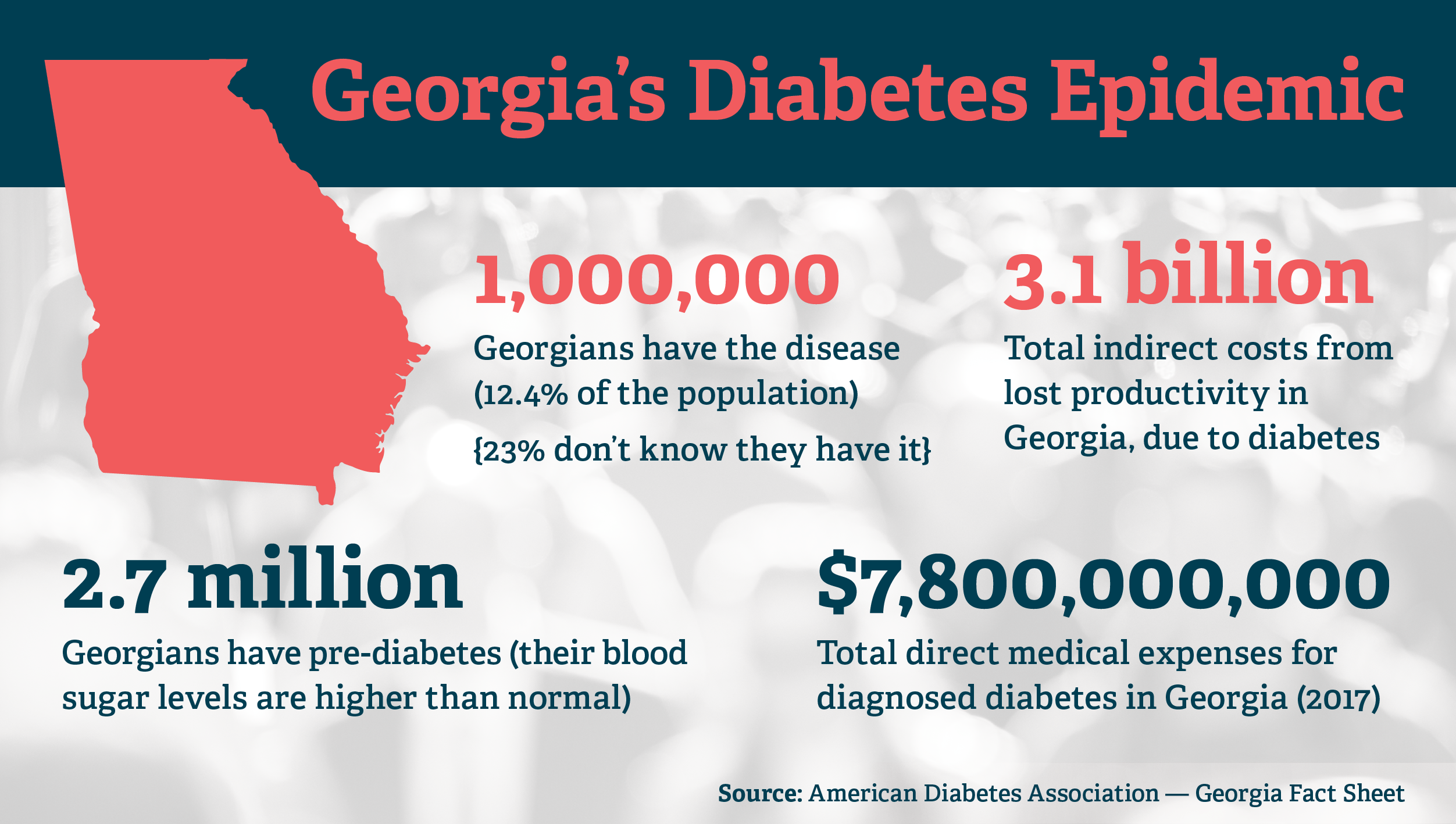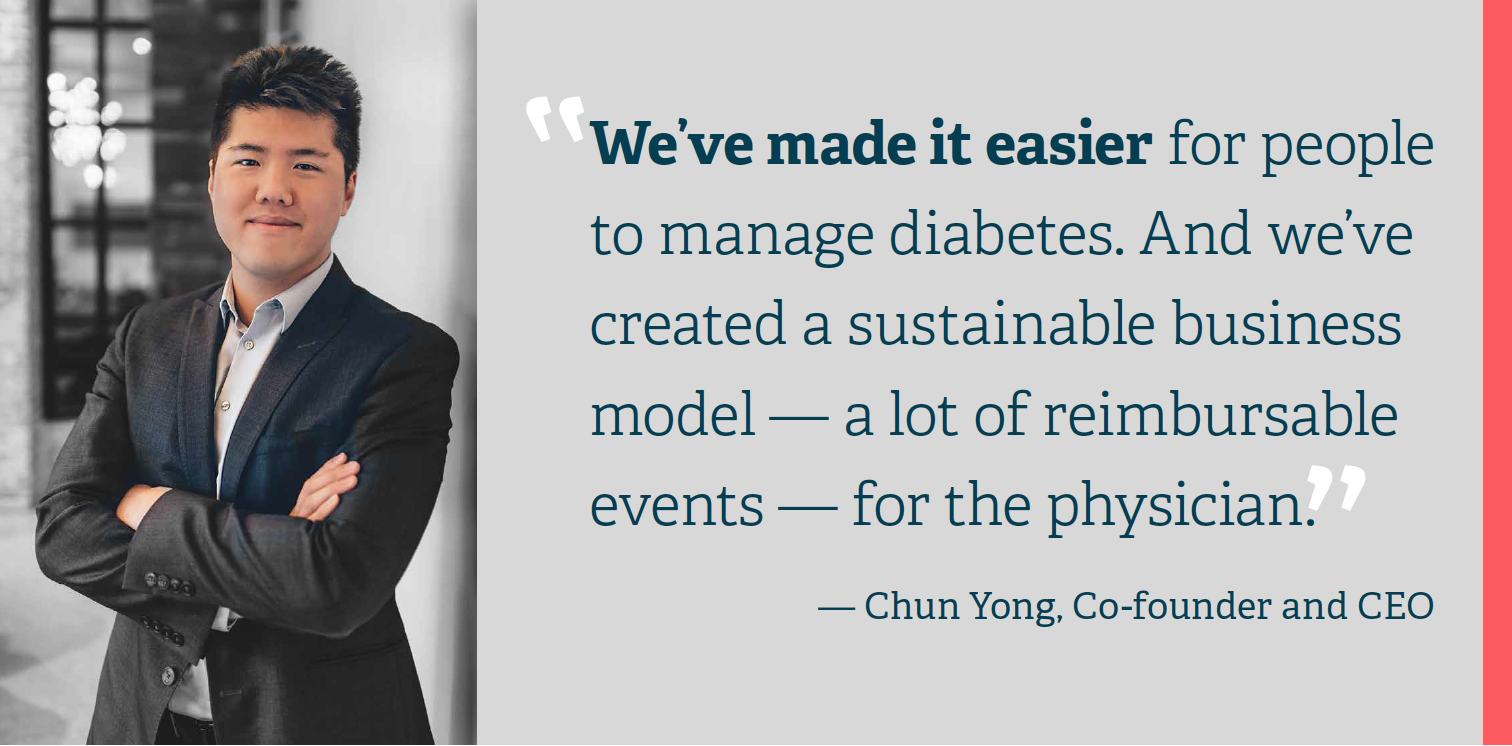

If you were asked how many Georgians either have adult diabetes or “pre-diabetes,” what would you guess? Five percent? Ten?
Try half. Half.
Of these, 14 percent of Georgia adults actually have the disease, whether they know it or not, according to the American Diabetes Association. Another 36 percent have blood sugar levels that are higher than normal – and in the range to be considered “pre-diabetes.” See if you might be one of them >
It’s a huge medical and economic problem in our state. Treating diabetes starts with keeping a close watch on blood sugar levels, measuring it several times a year – or for those on insulin, several times a day.
A startup out of Emory, backed by GRA, is lessening that burden for Georgians. It’s Diasyst, and in February 2021, it became the latest company to join the portfolio of GRA Venture Fund.
The quick pitch
Diasyst makes it easier for healthcare providers to track and manage patients with diabetes. Patients use special devices or an app on their mobile device to report their blood sugar levels; the data is automatically sent to their healthcare team. The Diasyst platform synthesizes many individual measurements into a single actionable data point.
And that data point informs how best to optimize the patient’s medications (based on the latest clinical guidelines).
And that’s good because…
It reduces the number of trips to the doctor.
And it allows doctors to adjust treatment more precisely.
And it drives new revenue to physician practices.
In the end, it makes managing diabetes much easier for everyone.

Big bonus to those in small Georgia towns
Diasyst can be used anywhere of course, but in rural areas, it’s especially helpful to people who have to travel long distances to visit a specialist. The hassle of scheduling and making those long trips is reduced while monitoring is increased.
Findings worth sharing
Something interesting happens when people start using Diasyst. They have lower blood sugars, safer blood sugars — and more blood sugars sustained at goal. In a couple of studies, participants who used Diasyst showed, on average, lower A1C and blood sugar levels. This increased monitoring is believed to have contributed to those results (along with more concise pharmacotherapy management and patient engagement).
It started as a senior project (kind of)
In 2011, Chun Yong was an undergrad at Georgia Tech. As part of his senior thesis, he was paired with Dr. Lawrence Phillips, an Emory professor of endocrinology and director of clinical studies at the Atlanta VA Medical Center. Their research yielded the intellectual property that led to Diasyst.
That’s when they knew they had something good
A clinical trial involving military veterans at Atlanta’s VA Medical Center allowed Yong, Phillips and their team to refine the technology. Yong: “Participants in the trial saw blood sugars go down during the trial, and unfortunately, back up when they stopped using the Diasyst monitoring system after the trial ended.”

…and they haven’t looked back since
Yong and Phillips launched the company in 2015. GRA’s venture development program has provided grants and a Phase III loan.
A pivotal moment
In 2019, the Centers for Medicare & Medicaid Services green-lighted four new reimbursement codes to allow more providers to get paid for using Diasyst and educating patients on the service. The financial benefit to doctors means more will use the platform. And: The COVID-19 pandemic has spurred industry demand for solutions like Diasyst.
A promising trend
Some states have passed new laws to expand the use of technologies like Diasyst to strengthen patient care in remote areas.
How much again?
Medical expenses for diagnosed diabetes in Georgia were estimated at $7.8 billion in 2017. Another $3 billion was spent on indirect costs from lost productivity. Source: American Diabetes Association
What one endocrinologist says
Dr. Jason Berner of Canton, Ga. uses Diasyst to help treat 30 patients with diabetes. Some live hours away. “If they see me at least once a year, I can improve and maintain their control.”

And get this
People with diabetes have about 2.3 times more medical expense than those who don’t have the condition.
The company faced a hurdle…
Healthcare teams can increase revenue by using Diasyst to monitor patients more frequently, adjusting treatment and billing insurance. Problem is, many say they don’t have the people to handle these tasks.
…so they did this
The company partnered with service providers that could make the service turnkey.
These providers supply medical practices with certified diabetes educators, clinical pharmacists and other clinical staff. As a result, more eligible patients can be easily enrolled and monitored in programs enabled by Diasyst.
Fun fact about the founder
A year after Chun Yong graduated from Georgia Tech with a biomedical engineering degree, he went to work at Coca-Cola designing user experiences. But he never lost track of the technology born out of his research days. And toward the end of his Coke stint, Yong co-founded Diasyst.
Now growing
As of 2022, Diasyst has expanded beyond diabetes to support other major chronic conditions, including hypertension. The market is there: Over 100 million American adults have high blood pressure, and many require frequent monitoring and better ways to manage medication to reduce the incidences of stroke, cardiac arrest and other costly complications.